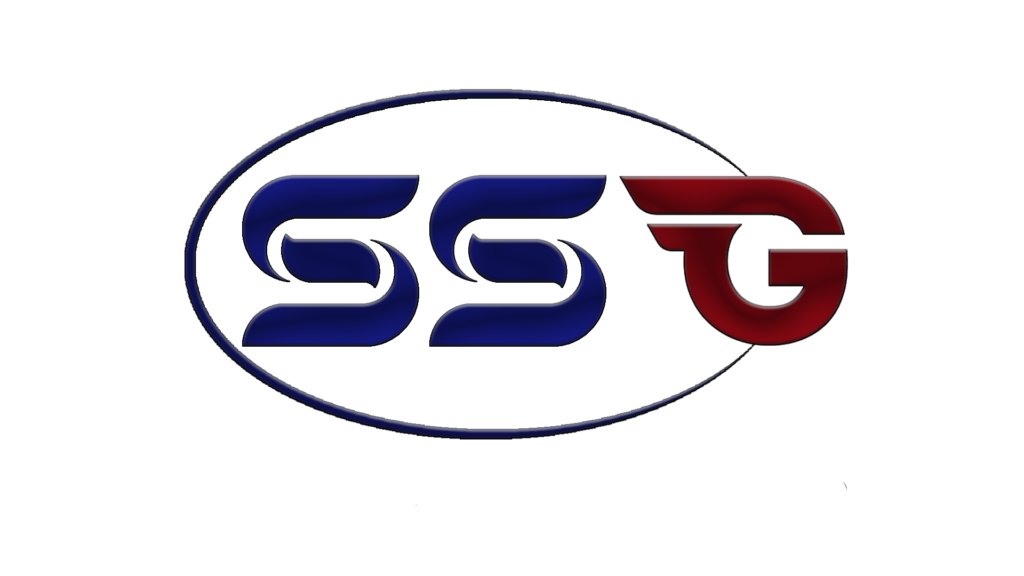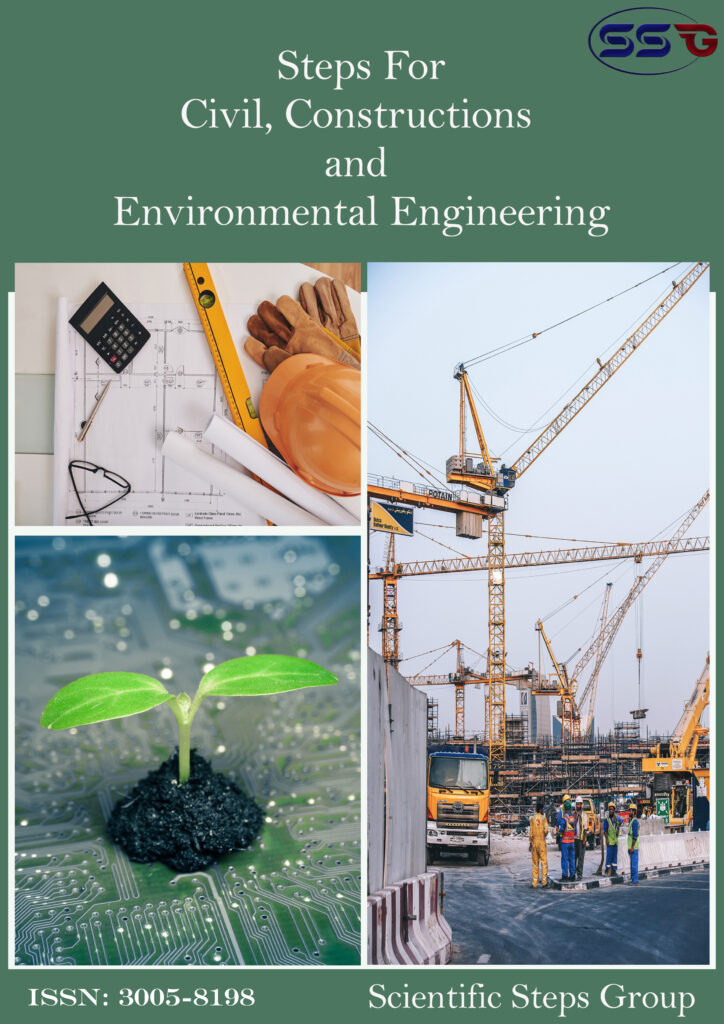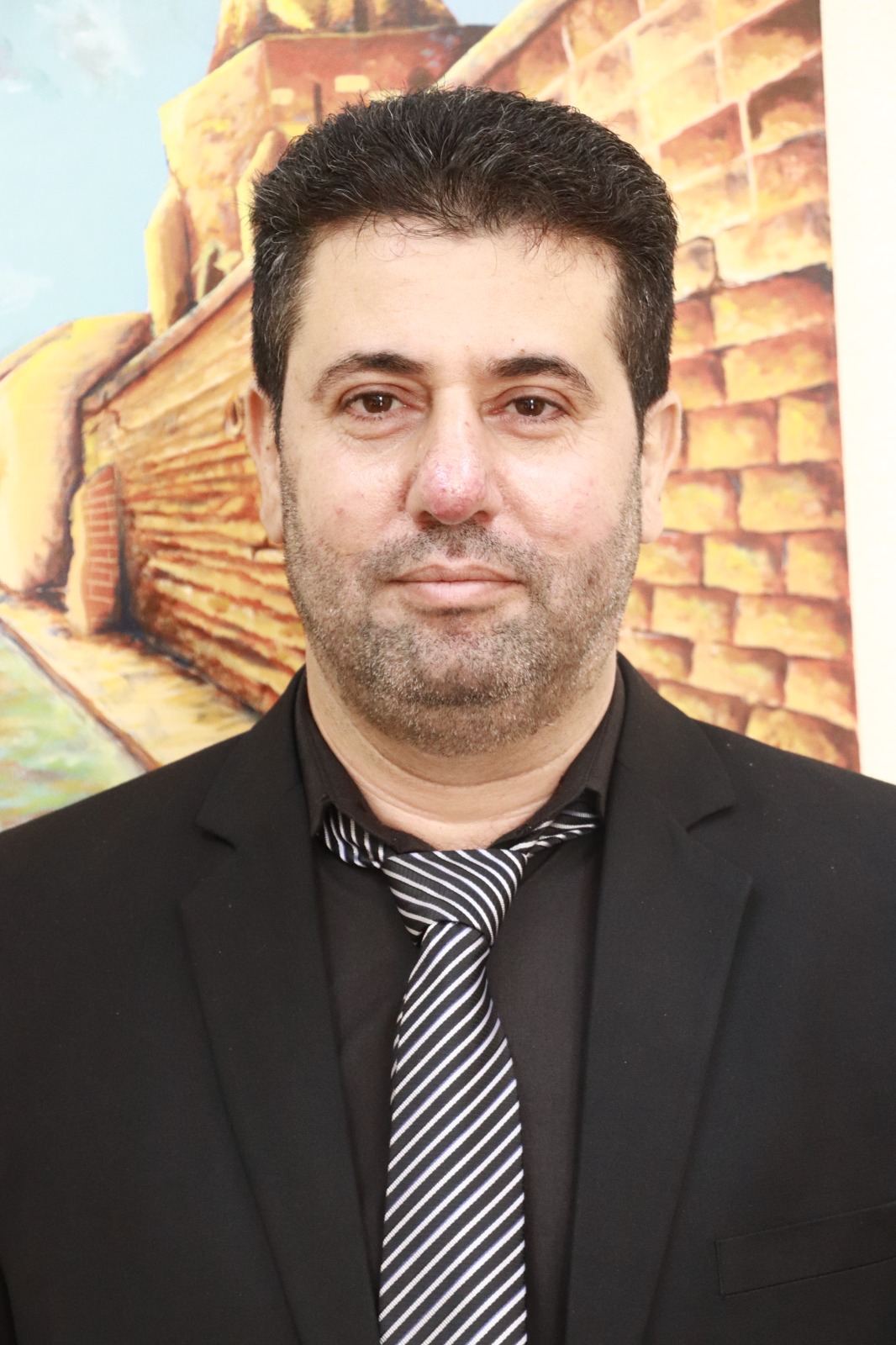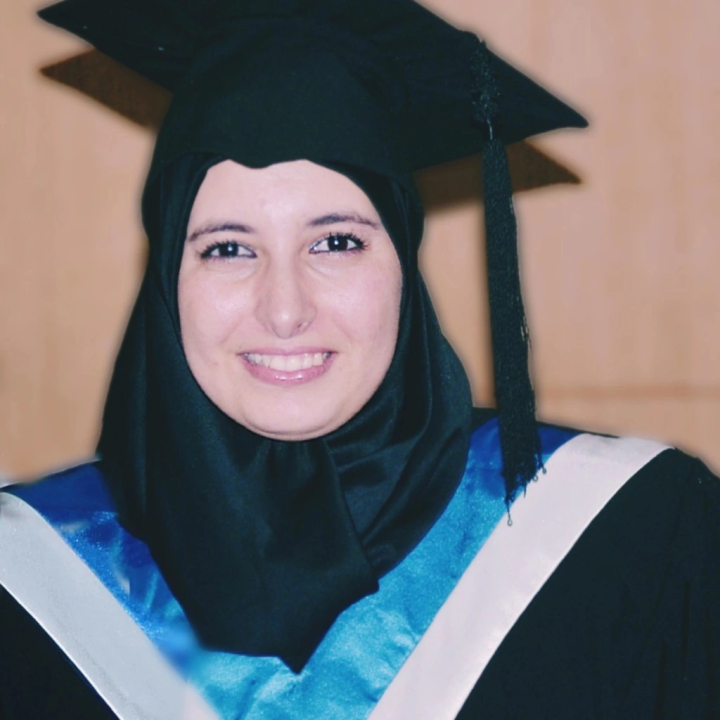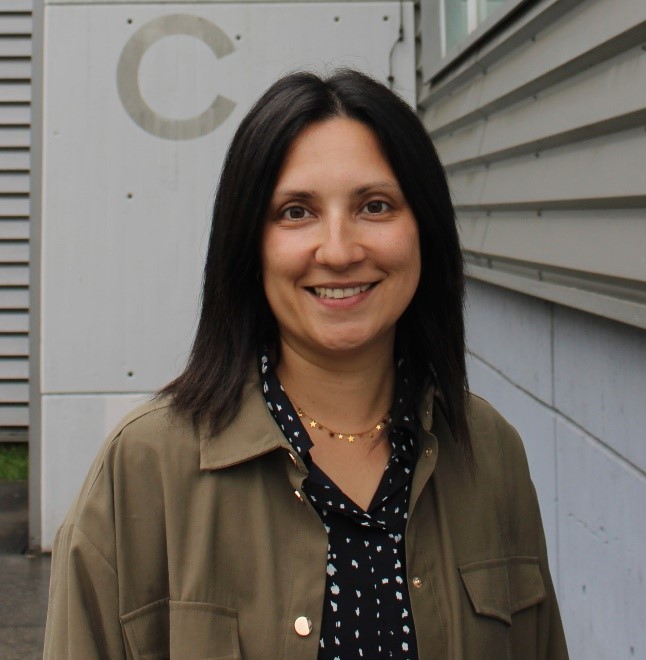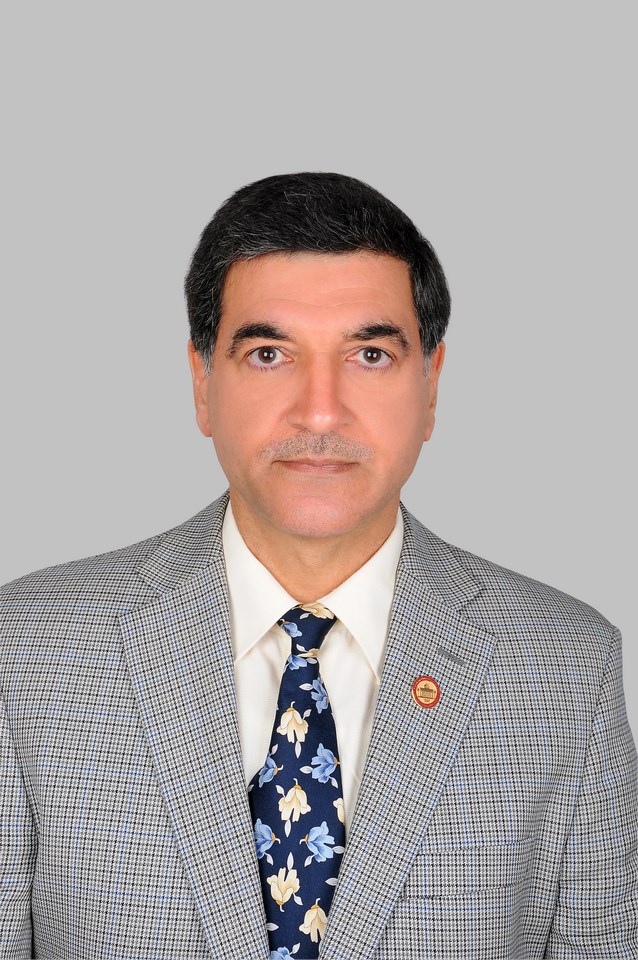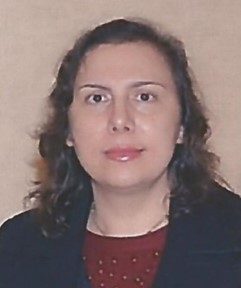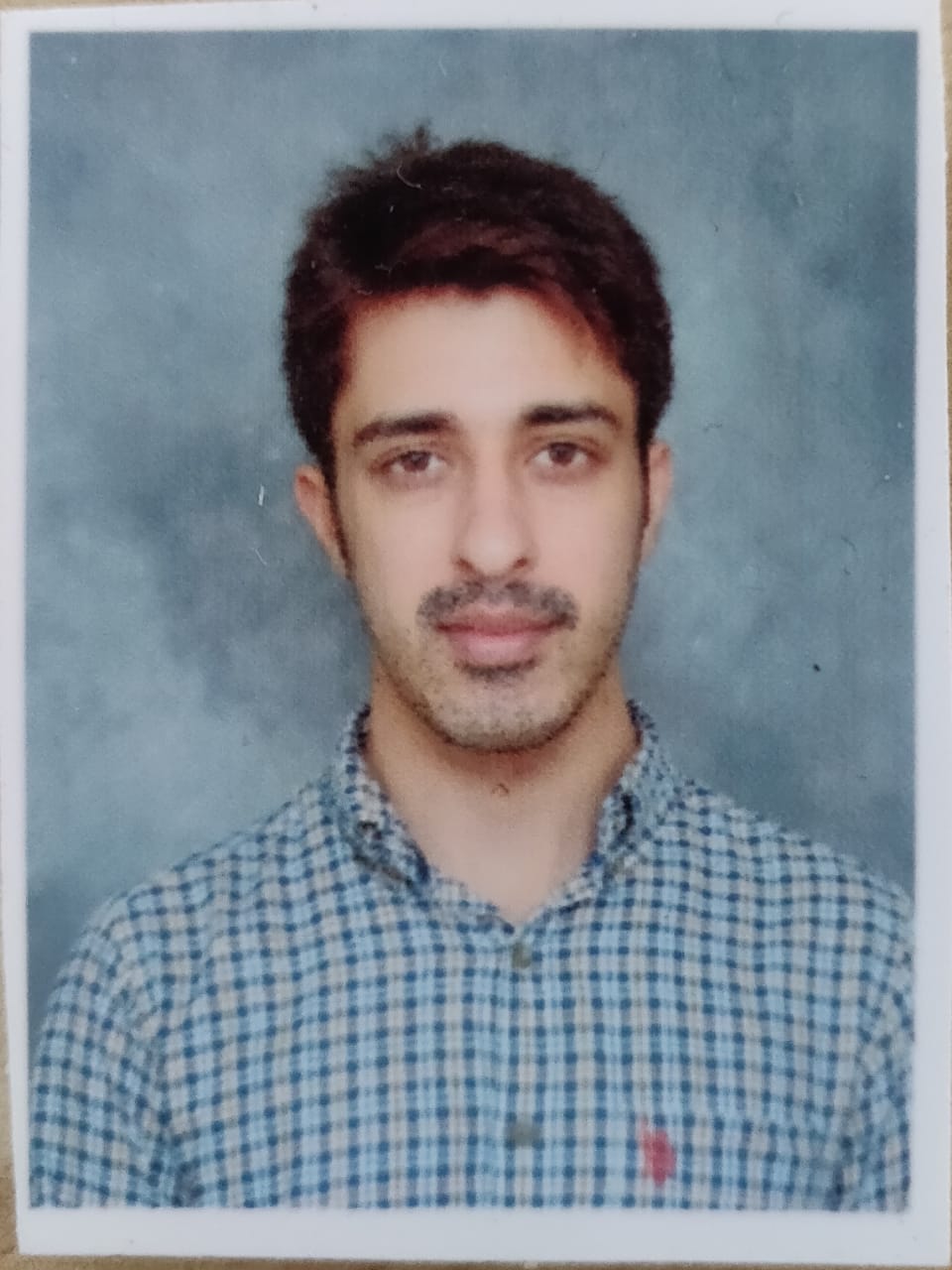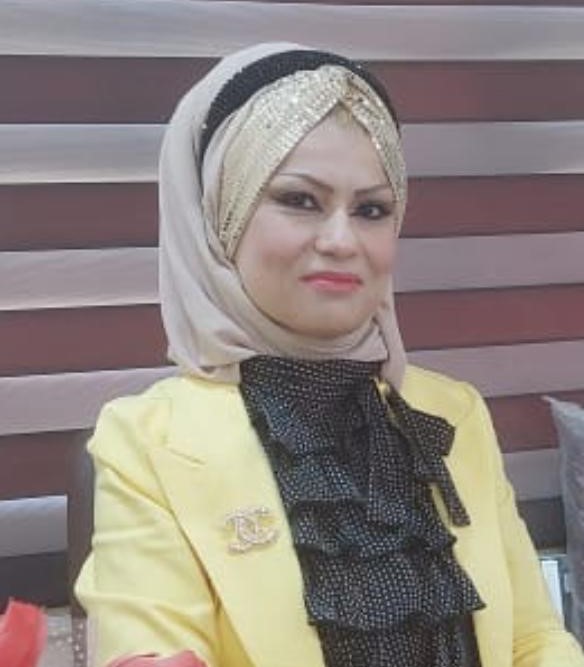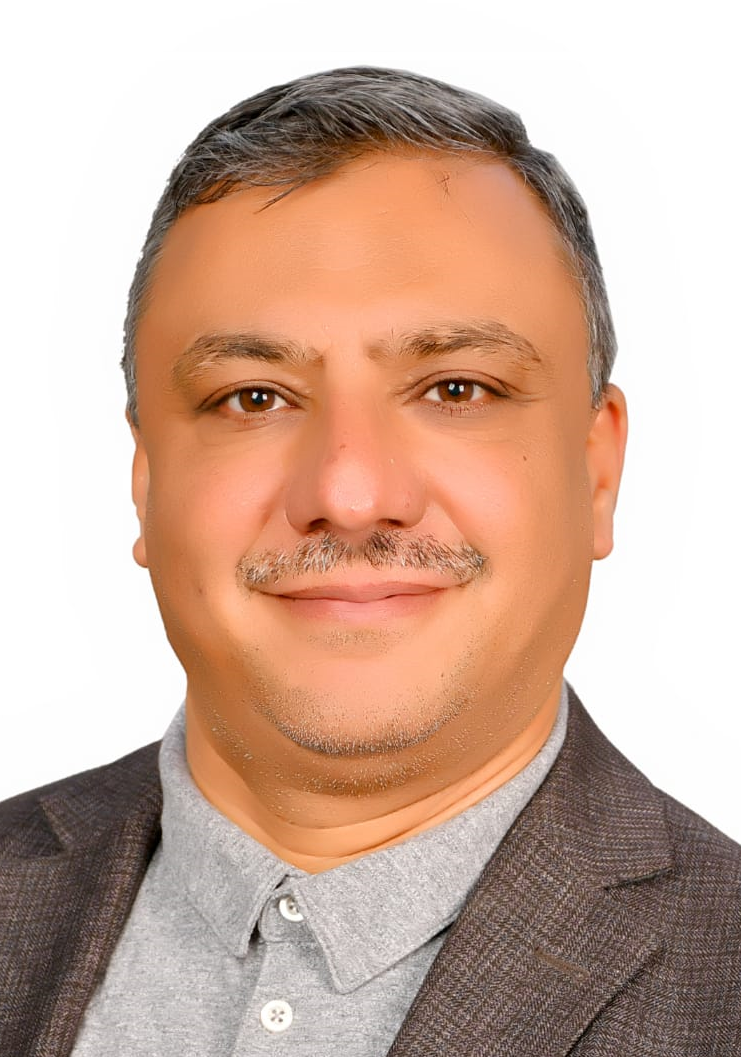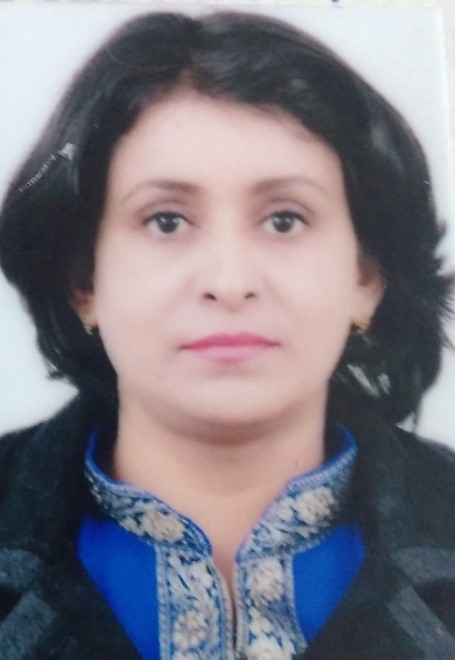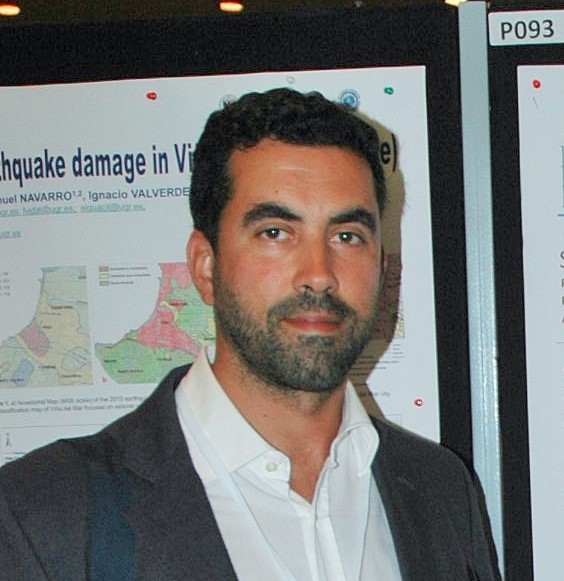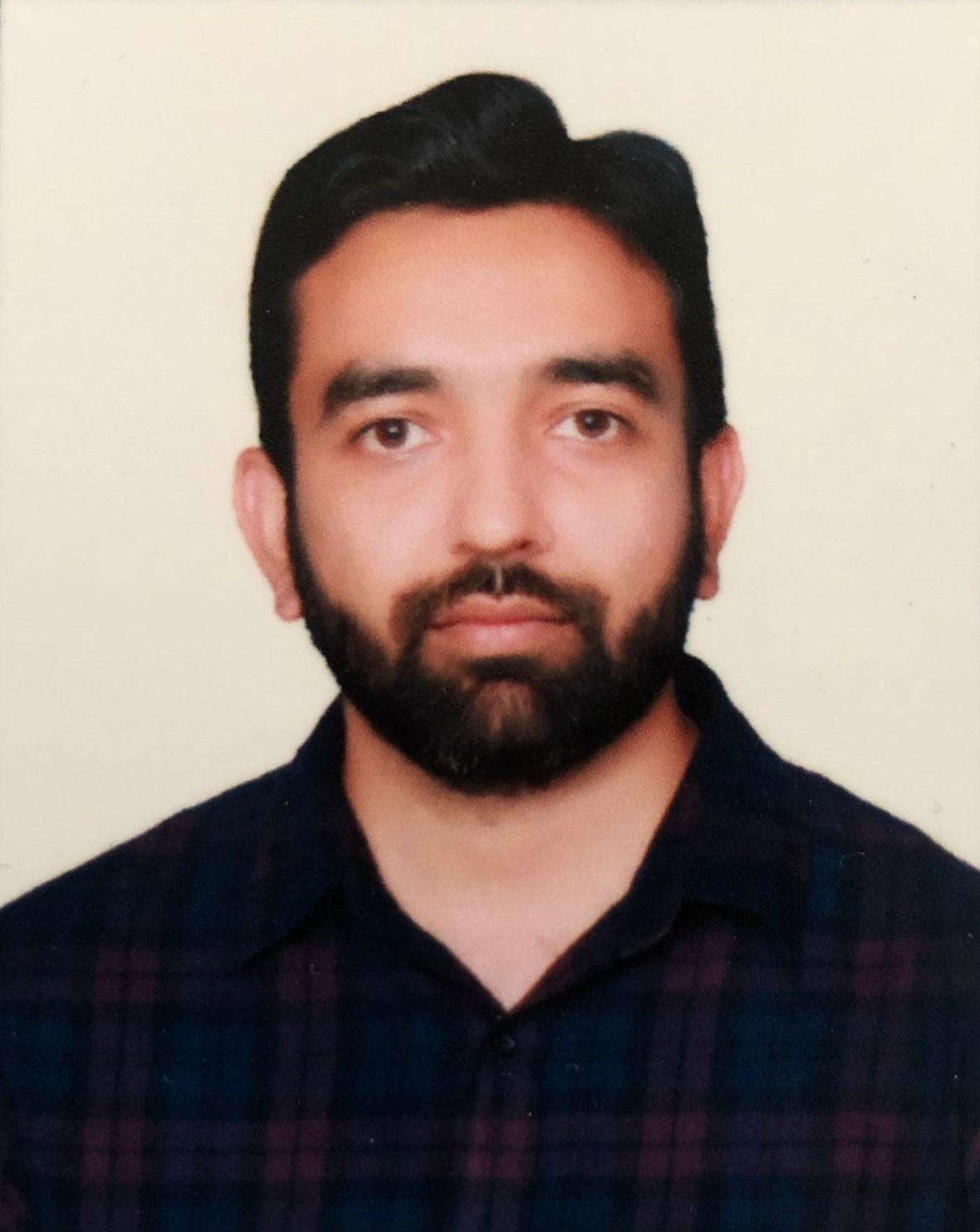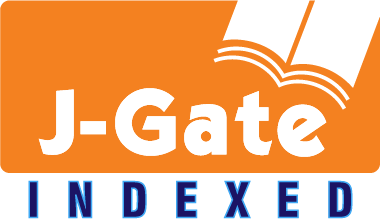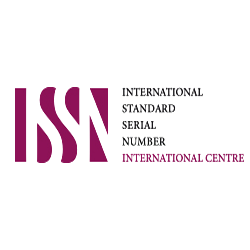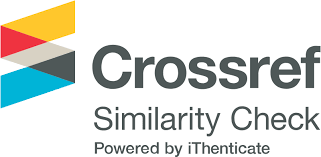Guide for Authors
Documents Required for Submission
When initiating a new submission through our online submission system, authors are required to upload the following documents to ensure proper processing of their manuscript:
All files must be complete and submitted in the required formats to proceed with the review process.
Submit your manuscript online through the Submission Website.
Type of Articles
- Research Article / Original Research: A complete report of original research findings, including methodology, results, and discussion. The total length should be less than 10,000 words, covering tables and figures but excluding references. These articles contribute new knowledge to the field and follow a structured format (Introduction, Methods, Results, Discussion).
- Review Articles: A comprehensive synthesis of existing research on a specific topic, summarizing key findings from multiple studies. Types include systematic reviews, scoping reviews, literature reviews, critical reviews, and meta-analyses. The maximum length is 12,000 words (excluding references). Review articles help identify research gaps and trends in a particular field.
- Letters / Short Reports / Communications: Brief reports highlighting preliminary findings, significant observations, or short research updates. These are concise, with a maximum of 2,500 words and typically up to 15 references. They allow for rapid dissemination of important discoveries.
- Case Report: A focused technical report presenting a detailed analysis of a unique engineering project, structural failure, innovative solution, or uncommon application of engineering principles. Case studies offer valuable insights into real-world challenges, design considerations, construction techniques, or performance anomalies. The maximum length is 2,500 words. Submissions typically include background context, technical specifications, problem-solving methodology, analysis of results, and lessons learned.
- Viewpoint / Opinion Article: An essay presenting the author’s perspective on a specific (sometimes controversial) topic. Unlike research papers, opinion pieces do not require original data but should offer critical analysis or provoke discussion. The maximum length is 1,500 words.
Writing and Formatting
File format
We ask you to provide editable source files for your entire submission (including figures, tables and text graphics). Some guidelines:
- Save files in an editable format, using the extension .doc/.docx for Word files. A PDF is not an acceptable source file.
- Lay out text in a single-column format.
- Remove any strikethrough and underlined text from your manuscript, unless it has scientific significance related to your article.
- Use spell-check and grammar-check functions to avoid errors.
Language
Please write your text in good English (American or British usage is accepted, but not a mixture of these). Authors who feel their English language manuscript may require editing to eliminate possible grammatical or spelling errors and to conform to correct scientific English may wish to use the Language Editing service.
Double anonymized peer review
This journal follows a double anonymized review process which means author identities are concealed from reviewers and vice versa.To facilitate the double anonymized review process, we ask that you provide your title page (including author details) and anonymized manuscript (excluding author details) separately in your submission.
The title page should include:
- Article title
- Author name(s)
- Affiliation(s)
- Corresponding author address (full address is required)
- Corresponding author email address
- Abstract
- Keywords (up to 5 keywords)
The anonymized manuscript should contain the main body of your paper including:
- References
- Figures
- Tables
It is important that your anonymized manuscript does not contain any identifying information such as author names or affiliations.
Read more about Peer Review Process.
Title page
You are required to include the following details in the title page information:
- Article title. Article titles should be concise and informative. Please avoid abbreviations and formulae, where possible, unless they are established and widely understood, e.g., DNA).
- Author names. Provide the given name(s) and family name(s) of each author. The order of authors should match the order in the submission system. Carefully check that all names are accurately spelled.
- Affiliations. Add affiliation addresses, referring to where the work was carried out, below the author names. Indicate affiliations using a lower-case superscript letter immediately after the author's name and in front of the corresponding address. Ensure that you provide the full postal address of each affiliation, including the country name and, if available, the email address of each author.
- Corresponding author. Clearly indicate who will handle correspondence for your article at all stages of the refereeing and publication process and also post-publication. This responsibility includes answering any future queries about your results, data, methodology and materials. It is important that the email address and contact details of your corresponding author are kept up to date during the submission and publication process.
- Present/permanent address. If an author has moved since the work described in your article was carried out, or the author was visiting during that time, a "present address" (or "permanent address") can be indicated by a footnote to the author's name. The address where the author carried out the work must be retained as their main affiliation address. Use superscript Arabic numerals for such footnotes.
Abstract
You are required to provide a concise, factual abstract not exceeding 250 words that briefly states the purpose of your research, the principal results, and the major conclusions. The abstract must be able to stand alone, as it is often presented separately from the article. Therefore, avoid including references unless absolutely necessary, in which case the author(s) and year(s) should be cited. Additionally, non-standard or uncommon abbreviations should be avoided; if they are essential, they must be clearly defined upon first mention within the abstract.
Keywords
You are required to provide 3 to 5 keywords for indexing purposes. Keywords should be written in English. Please try to avoid keywords consisting of multiple words (using "and" or "of"). We recommend that you only use abbreviations in keywords if they are firmly established in the field.
Math formulae
- Submit math equations as editable text, not as images.
- Present simple formulae in line with normal text, where possible.
- Use the solidus (/) instead of a horizontal line for small fractional terms such as X/Y.
- Present variables in italics.
- Denote powers of e by exp.
- Display equations separately from your text, numbering them consecutively in the order they are referred to within your text.
Tables
Tables must be submitted as editable text, not as images. Some guidelines:
- Place tables next to the relevant text or on a separate page(s) at the end of your article.
- Cite all tables in the manuscript text.
- Number tables consecutively according to their appearance in the text.
- Please provide captions along with the tables.
- Place any table notes below the table body.
- Avoid vertical rules and shading within table cells.
We recommend that you use tables sparingly, ensuring that any data presented in tables is not duplicating results described elsewhere in the article.
Figures, images and artwork
Figures, images, artwork, diagrams and other graphical media must be supplied as separate files along with the manuscript. Some excerpts:
When submitting artwork:
- Cite all images in the manuscript text.
- Number images according to the sequence they appear within your article.
- Submit each image as a separate file using a logical naming convention for your files (for example, Figure_1, Figure_2 etc).
- Please provide captions for all figures, images, and artwork.
- Text graphics may be embedded in the text at the appropriate position.
Figure captions
All images must have a caption. A caption should consist of a brief title (not displayed on the figure itself) and a description of the image. We advise you to keep the amount of text in any image to a minimum, though any symbols and abbreviations used should be explained.
Provide captions in a separate file.
Generative AI and Figures, images and artwork
Please read our policy on the use of generative AI and AI-assisted tools in figures, images and artwork, which can be found in GenAI Policies for Journals. This policy states:
- We do not permit the use of Generative AI or AI-assisted tools to create or alter images in submitted manuscripts.
- The only exception is if the use of AI or AI-assisted tools is part of the research design or methods (for example, in the field of biomedical imaging). If this is the case, such use must be described in a reproducible manner in the methods section, including the name of the model or tool, version and extension numbers, and manufacturer.
- The use of generative AI or AI-assisted tools in the production of artwork such as for graphical abstracts is not permitted. The use of generative AI in the production of cover art may in some cases be allowed, if the author obtains prior permission from the journal editor and publisher, can demonstrate that all necessary rights have been cleared for the use of the relevant material, and ensures that there is correct content attribution.
Supplementary material
We encourage the use of supplementary materials such as applications, images and sound clips to enhance research. Some guidelines:
- Supplementary material should be accurate and relevant to the research.
- Cite all supplementary files in the manuscript text.
- Submit supplementary materials at the same time as your article. Be aware that all supplementary materials provided will appear online in the exact same file type as received. These files will not be formatted or typeset by the production team.
- Include a concise, descriptive caption for each supplementary file describing its content.
- Provide updated files if at any stage of the publication process you wish to make changes to submitted supplementary materials.
- Do not make annotations or corrections to a previous version of a supplementary file.
- Switch off the option to track changes in Microsoft Office files. If tracked changes are left on, they will appear in your published version.
Research data
We are committed to supporting the storage of, access to and discovery of research data, and our research data policy sets out the principles guiding how we work with the research community to support a more efficient and transparent research process.
Research data refers to the results of observations or experimentation that validate research findings, which may also include software, code, models, algorithms, protocols, methods and other useful materials related to the project.
For this journal, the following instructions from our research data guidelines apply.
Article structure
Article sections
- Divide your article into clearly defined and numbered sections. Number subsections 1.1 (then 1.1.1, 1.1.2, ...), then 1.2, etc.
- Use the numbering format when cross-referencing within your article. Do not just refer to "the text."
- You may give subsections a brief heading. Headings should appear on a separate line.
- Do not include the article abstract within section numbering.
Theory and calculation
The theory section should lay the foundation for further work by extending the background you provided in the introduction to your article. The calculation section should represent a practical development from a theoretical basis.
Glossary
Please provide definitions of field-specific terms used in your article, in a separate list.
Acknowledgements
Include any individuals who provided you with help during your research, such as help with language, writing or proof reading, in the acknowledgements section. Include acknowledgements only in the Author Contribution Form (ACF) since this journal follows a double anonymized peer review process.
Author contributions: CRediT
Corresponding authors are required to acknowledge co-author contributions using CRediT (Contributor Roles Taxonomy) roles:
- Conceptualization
- Data curation
- Formal analysis
- Funding acquisition
- Investigation
- Methodology
- Project administration
- Resources
- Software
- Supervision
- Validation
- Visualization
- Writing -- original draft
- Writing -- review and editing
Not all CRediT roles will apply to every manuscript and some authors may contribute through multiple roles.
In addition to the Author Contributions section using the CRediT taxonomy, the following declarations must be included in the Author Contribution Form (ACF):
- Conflict of Interest Declaration
- Declaration on the Use of Generative AI and AI-Assisted Technologies (if applicable)
- Funding Statement (if applicable)
- Data Availability Statement
- Acknowledgements
Appendices
We ask you to use the following format for appendices:
- Identify individual appendices within your article using the format: A, B, etc.
- Give separate numbering to formulae and equations within appendices using formats such as Eq. (A.1), Eq. (A.2), etc. and in subsequent appendices, Eq. (B.1), Eq. (B. 2) etc. In a similar way, give separate numbering to tables and figures using formats such as Table A.1; Fig. A.1, etc.
References
References within text
Any references cited within your article should also be present in your reference list and vice versa. Some guidelines:
- References cited in your abstract must be given in full.
- We recommend that you do not include unpublished results and personal communications in your reference list, though you may mention them in the text of your article.
- Any unpublished results and personal communications included in your reference list must follow the standard reference style of the journal. In substitution of the publication date add "unpublished results" or "personal communication."
- References cited as "in press" imply that the item has been accepted for publication.
Linking to cited sources will increase the discoverability of your research.
Before submission, check that all data provided in your reference list are correct, including any references which have been copied. Providing correct reference data allows us to link to abstracting and indexing services such as Scopus, Crossref and PubMed. Any incorrect surnames, journal or book titles, publication years or pagination within your references may prevent link creation.
We encourage the use of Digital Object Identifiers (DOIs) as reference links as they provide a permanent link to the electronic article referenced.
Reference format
This journal does not set strict requirements on reference formatting at submission. Some guidelines:
- References can be in any style or format as long as the style is consistent.
- Author names, journal or book titles, chapter or article titles, year of publication, volume numbers, article numbers or pagination must be included, where applicable.
- Use of DOIs is recommended.
Our journal reference style will be applied to your article after acceptance, at proof stage. If required, at this stage we will ask you to correct or supply any missing reference data.
Examples:
Reference to a journal publication:
[1] J. van der Geer, T. Handgraaf, R.A. Lupton, The art of writing a scientific article, J. Sci. Commun. 163 (2020) 51-59. https://doi.org/10.1016/j.sc.2020.00372.
Reference to a journal publication with an article number:
[2] J. van der Geer, T. Handgraaf, R.A. Lupton, 2022. The art of writing a scientific article. Heliyon. 19, e00205. https://doi.org/10.1016/j.heliyon.2022.e00205.
Reference to a book:
[3] W. Strunk Jr., E.B. White, The Elements of Style, fourth ed., Longman, New York, 2000.
Reference to a chapter in a book:
[4] G.R. Mettam, L.B. Adams, How to prepare an electronic version of your article, in: B.S. Jones, R.Z. Smith (Eds.), Introduction to the Electronic Age, E-Publishing Inc., New York, 2020, pp. 281-304.
Reference to a website:
[5] Cancer Research UK, Cancer statistics reports for the UK. http://www.cancerresearchuk.org/aboutcancer/statistics/cancerstatsreport/, 2023 (accessed 13 March 2023).
Reference to a dataset:
[6] M. Oguro, S. Imahiro, S. Saito, T. Nakashizuka, Mortality data for Japanese oak wilt disease and surrounding forest compositions [dataset], Mendeley Data, v1, 2015. https://doi.org/10.1234/abc12nb39r.1.
Reference to software:
[7] E. Coon, M. Berndt, A. Jan, D. Svyatsky, A. Atchley, E. Kikinzon, D. Harp, G. Manzini, E. Shelef, K. Lipnikov, R. Garimella, C. Xu, D. Moulton, S. Karra, S. Painter, E. Jafarov, S. Molins, Advanced Terrestrial Simulator (ATS) v0.88 [software], Zenodo, March 25, 2020. https://doi.org/10.1234/zenodo.3727209.
Reference style
Citations in the text should follow the referencing style used by the American Psychological Association. You are referred to the Publication Manual of the American Psychological Association, Seventh Edition (2020) ISBN 978-1-4338-3215-4.
The reference list should be arranged alphabetically and then chronologically. More than one reference from the same author(s) in the same year must be identified by the letters 'a', 'b', 'c', etc., placed after the year of publication.
Examples:
Reference to a journal publication:
Van der Geer, J., Handgraaf T., & Lupton, R. A. (2020). The art of writing a scientific article. Journal of Scientific Communications, 163, 51-59. https://doi.org/10.1016/j.sc.2020.00372.
Reference to a journal publication with an article number:
Van der Geer, J., Handgraaf, T., & Lupton, R. A. (2022). The art of writing a scientific article. Heliyon, 19, Article e00205. https://doi.org/10.1016/j.heliyon.2022.e00205.
Reference to a book:
Strunk, W., Jr., & White, E. B. (2000). The elements of style (4th ed.). Longman (Chapter 4).
Reference to a chapter in a book:
Mettam, G. R., & Adams, L. B. (2020). How to prepare an electronic version of your article. In B. S. Jones, & R. Z. Smith (Eds.), Introduction to the electronic age (pp. 281-304). E-Publishing Inc.
Reference to a website:
Powertech Systems. (2022). Lithium-ion vs lead-acid cost analysis. Retrieved from http://www.powertechsystems.eu/home/tech-corner/lithium-ion-vs-lead-acid-cost-analysis/. Accessed January 6, 2022.
Reference to a dataset:
Oguro, M., Imahiro, S., Saito, S., & Nakashizuka, T. (2015). Mortality data for Japanese oak wilt disease and surrounding forest compositions [dataset]. Mendeley Data, v1. https://doi.org/10.17632/xwj98nb39r.1.
Reference to a conference paper or poster presentation:
Engle, E.K., Cash, T.F., & Jarry, J.L. (2019, November). The Body Image Behaviours Inventory-3: Development and validation of the Body Image Compulsive Actions and Body Image Avoidance Scales. Poster session presentation at the meeting of the Association for Behavioural and Cognitive Therapies, New York, NY.
Reference to software:
Coon, E., Berndt, M., Jan, A., Svyatsky, D., Atchley, A., Kikinzon, E., Harp, D., Manzini, G., Shelef, E., Lipnikov, K., Garimella, R., Xu, C., Moulton, D., Karra, S., Painter, S., Jafarov, E., & Molins, S. (2020). Advanced Terrestrial Simulator (ATS) (Version 0.88) [Computer software]. Zenodo. https://doi.org/10.5281/zenodo.3727209.
Web references
When listing web references, as a minimum you should provide the full URL and the date when the reference was last accessed. Additional information (e.g. DOI, author names, dates or reference to a source publication) should also be provided, if known.
You can list web references separately under a new heading directly after your reference list or include them in your reference list.
Data references
We encourage you to cite underlying or relevant datasets within article text and to list data references in the reference list.
When citing data references, you should include:
- author name(s)
- dataset title
- data repository
- version (where available)
- year
- global persistent identifier
Add [dataset] immediately before your reference. This will help us to properly identify the dataset. The [dataset] identifier will not appear in your published article.
Preprint references
We ask you to mark preprints clearly. You should include the word "preprint" or the name of the preprint server as part of your reference and provide the preprint DOI.
Where a preprint has subsequently become available as a peer-reviewed publication, use the formal publication as your reference.
If there are preprints that are central to your work or that cover crucial developments in the topic, but they are not yet formally published, you may reference the preprint.
Submitting your manuscript
Submission checklist
Before completing the submission of your manuscript, we advise you to read our submission checklist:
- One author has been designated as the corresponding author and their full contact details (email address, full postal address and phone numbers) have been provided.
- All files have been uploaded, including keywords, figure captions and tables (including a title, description and footnotes) included.
- Spelling and grammar checks have been carried out.
- All references in the article text are cited in the reference list and vice versa.
- Permission has been obtained for the use of any copyrighted material from other sources, including the Web.
- For open access articles, all authors understand that they are responsible for payment of the article publishing charge (APC) if the manuscript is accepted. Payment of the APC may be covered by the corresponding author's institution, or the research funder.
Journal specific information
The journal accepts only one corresponding author and does not allow to have multiple.
Ethics and Policies
Ethics in publishing
Authors must follow ethical guidelines stated in Scientific Steps International Publishing Services' Publishing Ethics Policy.
Submission declaration
When authors submit an article to an Scientific Steps International Publishing Services' journal it is implied that:
- the work described has not been published previously except in the form of a preprint, an abstract, a published lecture, academic thesis or registered report. See our policy on multiple, redundant or concurrent publication
- the article is not under consideration for publication elsewhere
- the article's publication is approved by all authors and tacitly or explicitly by the responsible authorities where the work was carried out
- if accepted, the article will not be published elsewhere in the same form, in English or in any other language, including electronically, without the written consent of the copyright-holder
To verify compliance with our journal publishing policies, we may check your manuscript with our screening tools.
Authorship
All authors should have made substantial contributions to all of the following:
- The conception and design of the study, or acquisition of data, or analysis and interpretation of data
- Drafting the article or revising it critically for important intellectual content
- Final approval of the version to be submitted
Authors should appoint a corresponding author to communicate with the journal during the editorial process. All authors should agree to be accountable for all aspects of the work to ensure that the questions related to the accuracy or integrity of any part of the work are appropriately investigated and resolved.
Changes to authorship
Authors are expected to consider carefully the list and order of authors before submitting their manuscript and provide the definitive list of authors at the time of the original submission. Any addition, deletion or rearrangement of author names in the authorship list should be made only before the manuscript has been accepted and only if approved by the journal Editor.
To request such a change, the Editor must receive the following from the corresponding author: (a) the reason for the change in author list and (b) written confirmation (e-mail, letter) from all authors that they agree with the addition, removal or rearrangement. In the case of addition or removal of authors, this includes confirmation from the author being added or removed.
Only in exceptional circumstances will the Editor consider the addition, deletion or rearrangement of authors after the manuscript has been accepted. While the Editor considers the request, publication of the manuscript will be suspended. If the manuscript has already been published in an online issue, any requests approved by the Editor will result in a corrigendum.
Funding Sources
Authors must disclose any funding sources who provided financial support for the conduct of the research and/or preparation of the article. The role of sponsors, if any, should be declared in relation to the study design, collection, analysis and interpretation of data, writing of the report and decision to submit the article for publication. If funding sources had no such involvement this should be stated in your submission.
List funding sources in this standard way to facilitate compliance to funder's requirements:
Funding: This work was supported by the National Institutes of Health [grant numbers xxxx, yyyy]; the Bill & Melinda Gates Foundation, Seattle, WA [grant number zzzz]; and the United States Institutes of Peace [grant number aaaa].
It is not necessary to include detailed descriptions on the program or type of grants, scholarships and awards. When funding is from a block grant or other resources available to a university, college, or other research institution, submit the name of the institute or organization that provided the funding.
If no funding has been provided for the research, it is recommended to include the following sentence:
This research did not receive any specific grant from funding agencies in the public, commercial, or not-for-profit sectors.
Declaration of generative AI in scientific writing
Authors must declare the use of generative AI in scientific writing upon submission of the paper. The following guidance refers only to the writing process, and not to the use of AI tools to analyse and draw insights from data as part of the research process:
- Generative AI and AI-assisted technologies should only be used in the writing process to improve the readability and language of the manuscript.
- The technology must be applied with human oversight and control and authors should carefully review and edit the result, as AI can generate authoritative-sounding output that can be incorrect, incomplete or biased. Authors are ultimately responsible and accountable for the contents of the work.
- Authors must not list or cite AI and AI-assisted technologies as an author or co-author on the manuscript since authorship implies responsibilities and tasks that can only be attributed to and performed by humans.
The use of generative AI and AI-assisted technologies in scientific writing must be declared by adding a statement at the end of the manuscript when the paper is first submitted. The statement will appear in the published work and should be placed in a new section before the references list. An example:
- Title of new section: Declaration of generative AI and AI-assisted technologies in the writing process
- Statement: During the preparation of this work the author(s) used [NAME TOOL / SERVICE] in order to [REASON]. After using this tool/service, the author(s) reviewed and edited the content as needed and take(s) full responsibility for the content of the published article.
The declaration does not apply to the use of basic tools, such as tools used to check grammar, spelling and references. If you have nothing to disclose, you do not need to add a statement.
Please read Scientific Steps International Publishing Services' author policy on the use of generative AI and AI-assisted technologies, which can be found in our GenAI Policies for journals.
Please note: to protect authors' rights and the confidentiality of their research, this journal does not currently allow the use of generative AI or AI-assisted technologies such as ChatGPT or similar services by reviewers or editors in the peer review and manuscript evaluation process, as is stated in our GenAI Policies for journals. We are actively evaluating compliant AI tools and may revise this policy in the future.
Use of inclusive language
Inclusive language acknowledges diversity, conveys respect to all people, is sensitive to differences, and promotes equal opportunities. Authors should ensure their work uses inclusive language throughout and contains nothing which might imply one individual is superior to another on the grounds of:
- age
- gender
- race
- ethnicity
- culture
- sexual orientation
- disability or health condition
We recommend avoiding the use of descriptors about personal attributes unless they are relevant and valid. Write for gender neutrality with the use of plural nouns ("clinicians, patients/clients") as default. Wherever possible, avoid using "he, she," or "he/she."
No assumptions should be made about the beliefs of readers and writing should be free from bias, stereotypes, slang, reference to dominant culture and/or cultural assumptions.
These guidelines are meant as a point of reference to help you identify appropriate language but are by no means exhaustive or definitive.
Reporting sex- and gender-based analyses
There is no single, universally agreed-upon set of guidelines for defining sex and gender. We offer the following guidance:
- Sex and gender-based analyses (SGBA) should be integrated into research design when research involves or pertains to humans, animals or eukaryotic cells. This should be done in accordance with any requirements set by funders or sponsors and best practices within a field.
- Sex and/or gender dimensions of the research should be addressed within the article or declared as a limitation to the generalizability of the research.
- Definitions of sex and/or gender applied should be explicitly stated to enhance the precision, rigor and reproducibility of the research and to avoid ambiguity or conflation of terms and the constructs to which they refer.
We advise you to read the Sex and Gender Equity in Research (SAGER) guidelines and the SAGER checklist (PDF) on the EASE website, which offer systematic approaches to the use of sex and gender information in study design, data analysis, outcome reporting and research interpretation.
For further information we suggest reading the rationale behind and recommended use of the SAGER guidelines.
Definitions of sex and/or gender
We ask authors to define how sex and gender have been used in their research and publication. Some guidance:
- Sex generally refers to a set of biological attributes that are associated with physical and physiological features such as chromosomal genotype, hormonal levels, internal and external anatomy. A binary sex categorization (male/female) is usually designated at birth ("sex assigned at birth") and is in most cases based solely on the visible external anatomy of a newborn. In reality, sex categorizations include people who are intersex/have differences of sex development (DSD).
- Gender generally refers to socially constructed roles, behaviors and identities of women, men and gender-diverse people that occur in a historical and cultural context and may vary across societies and over time. Gender influences how people view themselves and each other, how they behave and interact and how power is distributed in society.
